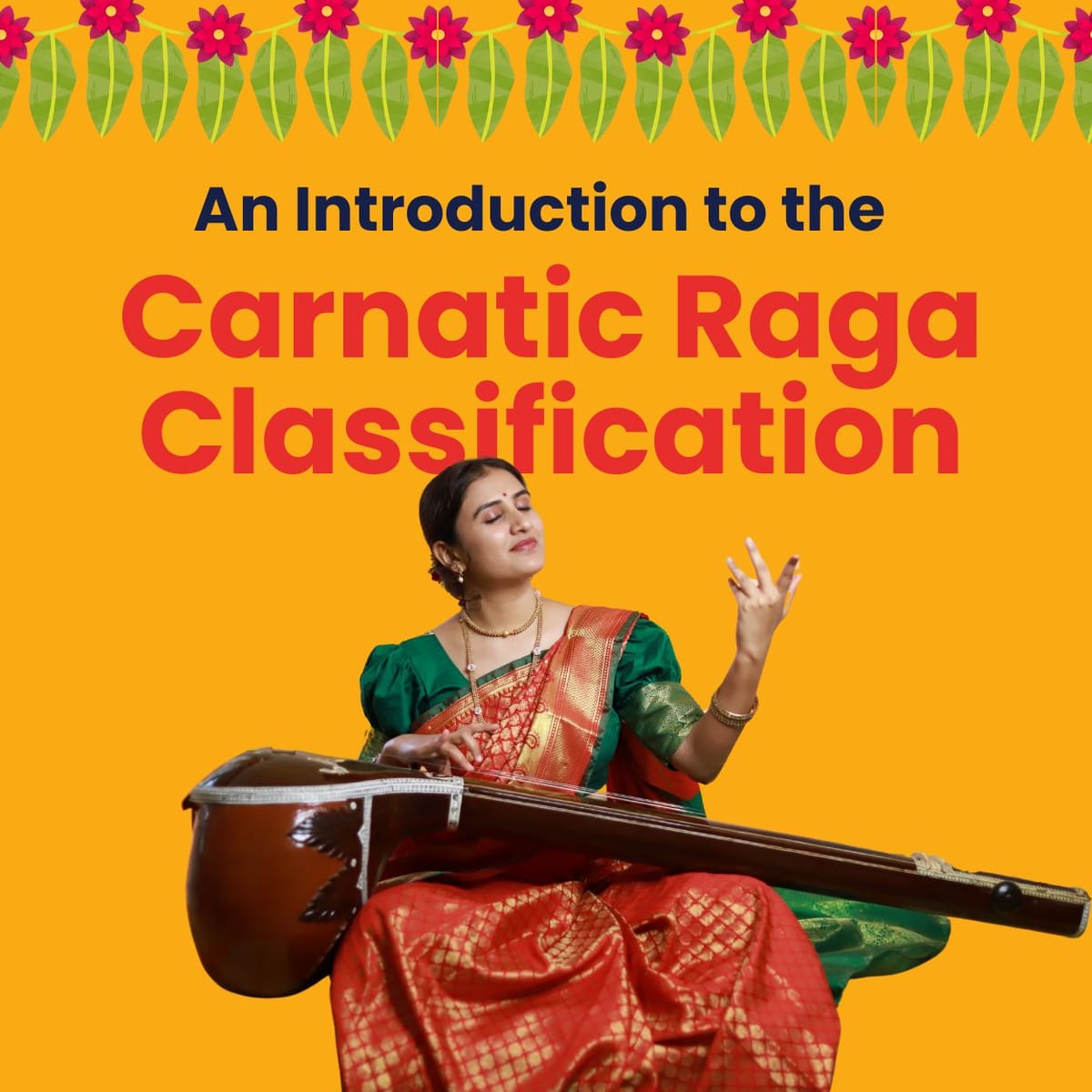
Table of Contents
Did you know that identifying the ragas is one of the most thrilling experiences throughout the musical journey?
But do you know what Raga is? Let's find out!
1. Raga
A raga (also called ragam in South Indian Carnatic music) is a group or combination of swaras which creates a beautifully structured melodic formulae. The arohana (the ascending order of swaras) and avarohana (the descending order of swaras) combine together to form different melodies.
Ragas are literally the backbone of South Indian classical music as this is the foundation within which all the compositions are being created. They bring so much of life, color and energy into a song and define the mood and ambience. Even the beginners are introduced to small raga phrases. Throughout this musical journey, one would hear a variety of ragas/melodies which creates various emotions. There are thousands of ragas in our system including the very ancient ragas and many ragas are being created even today.
Now let’s try to simplify this concept.
The raga classification can be easily done on the basis of how many swaras/notes we have. As we all know, we have 7 swaras in Indian Classical music, which are also called Saptaswaras. They are;

Some ragas have all 7 swaras like raga Mayamalavagoula (the first ragam that a beginner should learn in Carnatic music), Sankarabharanam, Kalyani and so on. These kinds of ragas are called Sampurna ragas/Complete ragas (ragas having all 7 swaras). Some Sampurna ragas have a very structured ascending and descending scale without any jumps or skipping swaras. So these ragas are called a Melakartha raga/Janaka raga/Parent raga. There are 72 Fundamental ragas.
2. Why call it a Parent raga?
Because they are the origin and they give birth to many child ragas which are called Janya ragas.
3. Janya Ragas
Janya ragas are those ragas that are derived from the Janaka ragas and show the characteristics of their respective parent ragas. These ragas can be sampurna or an asampurna scale. There are multiple Janya ragas according to the 72 Melakartha system.
This picture will give you a better understanding:

Each Janaka raga/Parent raga can have multiple Janya ragas/Child ragas. Given below are a few examples of Janaka - Janya ragas:
4. Classification of Janya Ragas
i. Varja ragas
a. Audava Ragas
b. Shadava Ragas
ii. Vakra Ragas
iii. Upanga Ragas
iv. Bhashanga Ragas
v. Nishadantya ragas
vi. Daivatantya ragas
vii. Panchamantya ragas
i. Varja Ragas
The ragas that are deleting one, two or three swaras in the aarohana or avarohana or in both scales are called Vakra ragas. Vakra ragas are again classified into different types and the main 2 classifications are Audava ragas and Shadava ragas.
a. Audava Ragas
The ragas that have 5 swaras in both arohana and avarohana are called Audava ragas.
For example: Mohanam.
b. Shadava Ragas
The ragas that have 6 swaras in both arohana and avarohana are called Shadava ragas.
For example: Sri Ranjani.
Varja Ragas can be in different combinations, such as Audava - Shadava ragas (5 swaras in arohanam and 6 swaras in avarohanam), it can be Audava - Sampurna (5 in arohanam and 7 in avarohanam), and again it can be Audava - Vakra (5 in arohanam, more than 7 swaras in avarohanam) and also the opposites like Shadava - Audava, Shadava - Sampurna, Shadava - Vakra, Sampurna - Vakra, and so on.
ii. Vakra Ragas
The ragas with repetition of swaras are called Vakra ragas. There should be at least one repeated swara either in arohana or avarohana, or in both scales.
For example: Reetigoula, Sri ragam, etc…
iii - iv. Upanga & Bhashanga Ragas
The ragas that take the exact swaras from their parent ragas are called Upanga ragas. And the ragas that use one or two anya swaras or foreign notes that are not present in the respective parent ragas are called Bhashanga ragas.
Example of - Upanga Raga: Mohanam
Bhashanga Raga: Ananda Bhairavi
v - vii. Nishadantya, Daivadantya, Panchamantya Ragas
These are the ragas that end their sancharas with the swaras Nishadam, Daivatham and Panchamam respectively.
Examples: The raga Nadanamakriya ends with Nishadam, the raga Navaroj ends with Panchama, and the raga Kurinji ends with Daivatam.
These are the main classifications of Janaka and Janya ragas. All these combinations helped a lot in forming thousands of ragas.
To know more about the raga classifications in detail keep following Spardha School of Music and get the proper guidance from Spardha’s certified Carnatic teachers.
Written By,
Anagha Murali
Carnatic Vocal SME
